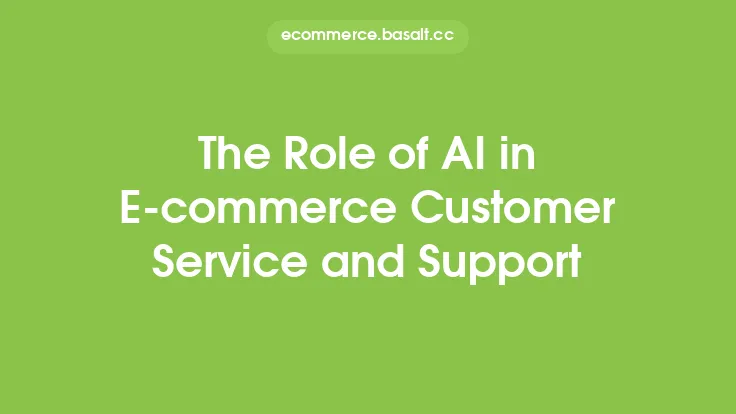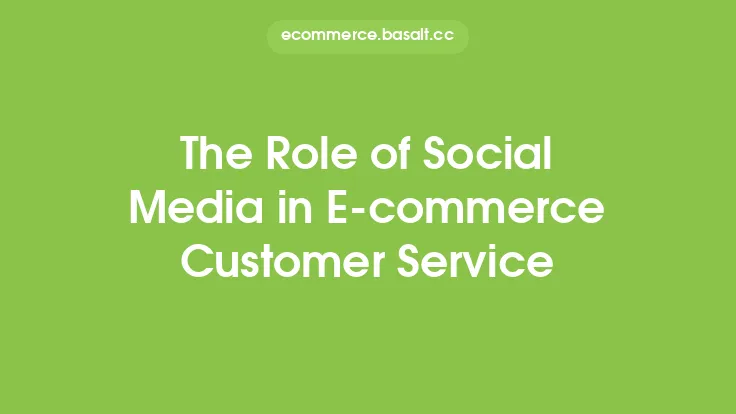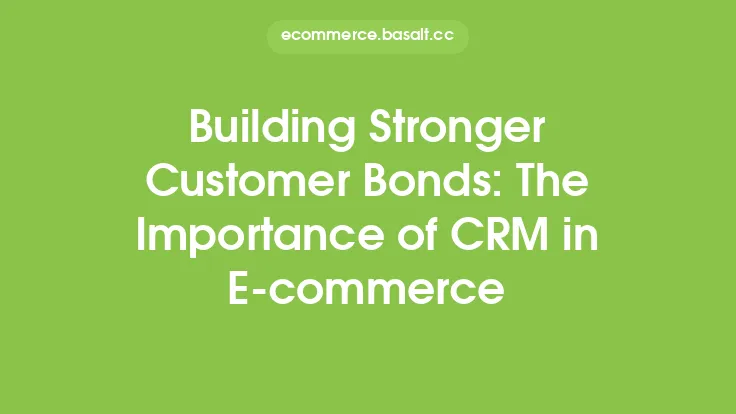In today's digital age, e-commerce has become an integral part of the retail landscape, with more and more consumers turning to online shopping for its convenience, flexibility, and accessibility. As a result, providing excellent customer service has become a crucial aspect of e-commerce success. One key strategy that has emerged in recent years is multichannel customer service, which involves offering support to customers across multiple channels, including social media, email, phone, live chat, and more. In this article, we will explore the benefits of multichannel customer service in e-commerce and why it is essential for businesses to adopt this approach.
What is Multichannel Customer Service?
Multichannel customer service refers to the practice of providing customer support through multiple channels, allowing customers to interact with a company in the way that is most convenient for them. This can include traditional channels such as phone and email, as well as newer channels such as social media, live chat, and messaging apps. The goal of multichannel customer service is to provide a seamless and consistent customer experience across all channels, ensuring that customers can easily get the help they need, whenever and wherever they need it.
Benefits of Multichannel Customer Service
There are numerous benefits to implementing a multichannel customer service strategy in e-commerce. Some of the most significant advantages include:
- Increased customer satisfaction: By providing support across multiple channels, businesses can ensure that customers can easily get the help they need, which can lead to increased satisfaction and loyalty.
- Improved response times: Multichannel customer service allows businesses to respond quickly to customer inquiries, regardless of the channel they use to contact the company.
- Enhanced customer experience: By providing a consistent and seamless experience across all channels, businesses can create a positive and engaging customer experience that sets them apart from the competition.
- Increased efficiency: Multichannel customer service can help businesses to streamline their support processes, reducing the time and resources required to resolve customer issues.
- Better customer insights: By interacting with customers across multiple channels, businesses can gain a deeper understanding of their needs and preferences, which can inform product development, marketing, and other business strategies.
Key Channels for Multichannel Customer Service
When it comes to implementing a multichannel customer service strategy, there are several key channels that businesses should consider. These include:
- Social media: Social media platforms such as Facebook, Twitter, and Instagram have become increasingly important channels for customer service, with many customers turning to these platforms to ask questions, report issues, and provide feedback.
- Email: Email remains a popular channel for customer service, with many customers preferring to contact businesses via email for its convenience and flexibility.
- Phone: Phone support is still a crucial channel for customer service, particularly for complex or urgent issues that require a more personal touch.
- Live chat: Live chat has become an increasingly popular channel for customer service, with many businesses using chatbots and live agents to provide quick and convenient support to customers.
- Messaging apps: Messaging apps such as WhatsApp and Facebook Messenger are also becoming important channels for customer service, with many businesses using these platforms to provide support and engage with customers.
Implementing a Multichannel Customer Service Strategy
Implementing a multichannel customer service strategy requires careful planning and execution. Some key steps to consider include:
- Assessing customer needs and preferences: Businesses should start by assessing their customers' needs and preferences, including the channels they use to interact with the company and the types of support they require.
- Developing a channel strategy: Based on customer needs and preferences, businesses should develop a channel strategy that outlines the channels they will use to provide support and the resources they will allocate to each channel.
- Investing in technology: Businesses should invest in technology that enables them to provide support across multiple channels, including social media management tools, email management software, and live chat platforms.
- Training staff: Businesses should provide training to their staff on the importance of multichannel customer service and the skills and knowledge required to provide excellent support across multiple channels.
- Monitoring and evaluating performance: Finally, businesses should monitor and evaluate their performance across each channel, using metrics such as response times, resolution rates, and customer satisfaction to identify areas for improvement.
Overcoming Challenges and Obstacles
While multichannel customer service offers many benefits, it also presents several challenges and obstacles. Some of the most common challenges include:
- Integrating multiple channels: One of the biggest challenges of multichannel customer service is integrating multiple channels, including social media, email, phone, and live chat.
- Providing consistent support: Another challenge is providing consistent support across all channels, ensuring that customers receive the same level of service and support regardless of the channel they use.
- Managing volume and complexity: Multichannel customer service can also create challenges in terms of managing volume and complexity, particularly if businesses are dealing with a high volume of customer inquiries or complex issues.
- Measuring performance: Finally, measuring performance across multiple channels can be challenging, particularly if businesses are using different metrics and benchmarks to evaluate their performance.
Best Practices for Multichannel Customer Service
To overcome the challenges and obstacles of multichannel customer service, businesses should follow several best practices. These include:
- Providing a seamless and consistent experience across all channels
- Investing in technology that enables integration and automation
- Training staff on the importance of multichannel customer service and the skills and knowledge required to provide excellent support
- Monitoring and evaluating performance across each channel
- Using data and analytics to inform channel strategy and improve performance
- Continuously reviewing and refining the customer service strategy to ensure it meets the evolving needs and preferences of customers.
Conclusion
In conclusion, multichannel customer service is a crucial aspect of e-commerce success, enabling businesses to provide excellent support to customers across multiple channels. By understanding the benefits and challenges of multichannel customer service, businesses can develop a strategy that meets the needs and preferences of their customers, driving satisfaction, loyalty, and ultimately, revenue growth. Whether through social media, email, phone, live chat, or messaging apps, multichannel customer service is essential for businesses that want to stay ahead of the competition and provide a world-class customer experience.





